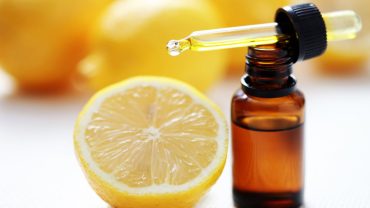Wound Care 101
The invention of the modern wound care system is credited to Dr. W.B. Clarke, who patented a paper bandage in 1858 suitable for use on wounds and skin grafts during surgery in the Civil War era. Although technology has advanced dramatically since then, our knowledge about wound care remains relatively limited–we only know so much about what’s working and not working when it comes to healing wounds.
Cuts and scrapes are typical wounds that most of us encounter from time to time, but do you know how to cure these wounds naturally and quickly? The majority of small wounds are harmless and heal within a few days, but they may occasionally get infected, so it’s important to encourage wound healing with good wound care.
Any injury or break in the skin’s surface is referred to as a wound. Wounds, which may be open or closed, are usually caused by trauma or skin disintegration. If a wound is fresh, it is termed an acute wound. Chronic wounds are defined as those that linger longer than three to four weeks.
You’ve come to the correct site if you’re wondering how to quickly cure wounds on the face and body. How can a wound heal more quickly? Healing time may be reduced, and undesired side effects like infections and scars can be avoided with adequate initial wound care and continuing attention to the wound, including some extremely effective natural therapies.
Wounds of Various Types
Wounds are classified as acute or chronic, open or closed, and several subtypes are within these classifications.
The following are some examples of common wounds:
- Cuts
- Burns
- Scrapes
- Wounds caused by punctures
- Sores caused by pressure
Minor injuries, such as a paper cut, may heal in a matter of days. How long does a deep wound take to heal? It is quite variable. Large or severe wounds from surgical incisions, for example, might take six to eight weeks to heal. The length of time it takes for a wound to heal depends on several variables. Wounds may take anything from a few days to many weeks, months, or even years to heal fully.
The following variables may delay or inhibit wound healing:
- Infection
- Diabetes
- A lack of blood flow
- Obesity increases the risk of infection after surgery.
- Age in general, older persons recover more slowly than younger ones.
- Heavy drinking may stifle healing and raise the risk of infection.
- Smoking slows healing and raises the risk of problems, including infection and wounds, rupturing.
- Stress may lead to a lack of sleep, a poor diet, and increased smoking/drinking, which can stifle recovery.
- Taking corticosteroids, nonsteroidal anti-inflammatory medicines (NSAIDs), and certain chemotherapy therapies
Can Vaseline be used to treat cuts? Vaseline, or petroleum jelly, has not been demonstrated to help heal wounds or reduce scarring. It is, in fact, quite clogging to the skin. It may give moisture, but there are numerous natural moisturizers you can use instead, such as coconut oil (more on that later).
Wound Healing Stages
If you look at photographs of wound healing phases, you’ll see a basic process that happens from the moment a wound is created to the time it is entirely healed.
Wound healing is divided into four phases or categories. What is the difference between the four phases of wound healing? The following is a basic wound healing timeline:
Stage 1 — Hemostasis (Bleeding Stops): Proteins in your blood act as glue, causing platelets to clump together and adhere to the opening in the blood vessel, forming a clot and stopping bleeding from the wound.
Stage 2 — Defensive/Inflammatory Stage: Blood platelets produce chemicals that promote inflammation, which may cause swelling and redness surrounding the incision. Chronic inflammation is a concern, yet this is an excellent illustration of the body’s transient and beneficial inflammation. Infection-fighting white blood cells also make their way to the wound site at this point to clear out any germs and release growth factors that will aid in wound healing. This period usually lasts four to six days.
Stage 3 — Proliferative Stage (Skin Rebuilds): This is the stage at which your body begins to produce new skin cells and give the wound the oxygen and nutrition it needs to heal effectively. Chemical messengers also instruct skin cells to produce collagen, a necessary protein for repairing the injured region. At this point, a reddish scar may appear, but it will disappear with time and the application of natural scar cures. Stage 3 might last anywhere from four to twenty-four days.
Stage 4 — Maturation Phase: The new skin becomes stronger throughout this last stage of recovery. It’s typical to see some puckering or straining around the incision region as the new skin tissue settles in. This stage might take anything from 21 days to two years to complete.
7 Natural Wound Healing Methods
How can I hasten the healing of my wound? This is a question you may have been asking yourself before reading this post. First, clean your wound with running water and moderate soap, dry it, and then wrap it with a sterile bandage for small wounds. Next, follow your healthcare provider’s wound care guidelines for more severe wounds.
If you’re seeking more natural ways to heal wounds quickly, here are a few suggestions:
1. Foods for Healing Wounds
Don’t forget about your food if you seek ways to cure serious wounds quickly. There are a variety of meals that may aid with healing, including:
- Kale, broccoli, spinach, and other green leafy vegetables are abundant in vitamin K, which is necessary for blood clotting.
- Protein must be clean and lean for the body to replace lost tissue. Therefore, at least four to five ounces of organic, lean protein (wild-caught fish or grass-fed cattle) should be consumed each meal.
- Essential fatty acids contained in foods such as wild-caught fish, walnuts, flaxseeds, and chia seeds are important in helping wounds heal quickly.
2. Stay away from foods that slow down the healing process
Then there are certain meals you should avoid to promote healing, such as:
- Alcohol: It may cause inflammation, which is harmful to the healing process.
- Sugar and processed carbohydrates may cause inflammation and impede the healing process.
- Hydrogenated fats: Hydrogenated fats increase inflammation and reduce your body’s capacity to repair.
- Processed meals may include hydrogenated oils, chemicals, colors, and other potentially harmful ingredients that impede wound healing.
3. Collagen
If you’re looking for a way to speed up the healing of a wound, try collagen, which is the most prevalent protein in the body and provides your skin structure. Internal collagen supplementation may aid wound healing by assisting the body’s manufacture of collagen to mend the wound. Collagen is also known to promote new tissue development when applied topically in wound dressings.
To get more collagen in your diet, consider preparing homemade bone broth or purchasing a collagen-rich protein powder prepared from bone broth. According to research, collagen powder may be useful as an additional treatment for chronic wounds, including pressure ulcers and diabetic foot ulcers.
4. Unprocessed honey
A knee scratch will recover in much less time than a deeper cut, which is unsurprising. If you’re wondering how I can speed up the healing of my wound, read on. Raw honey is a wonderful cure for speeding up the healing of wounds. Honey may assist in cleaning the wound, alleviate pain, and possibly speed up the healing process by reducing symptoms of infection such as pus and smells.
Honey is an excellent antiseptic wound treatment in studies. This is because honey combines with the body’s fluids to produce hydrogen peroxide, making bacteria’s habitat uninhabitable. Furthermore, since “concentrations of hydrogen peroxide created are extremely low in contrast to those commonly given to a wound, cytotoxic damage by hydrogen peroxide is very low,” “cytotoxic damage by hydrogen peroxide is very low.” In other words, honey, rather than using pure hydrogen peroxide, which may sometimes be too powerful for wounds and cause tissue damage, can encourage appropriate amounts of hydrogen peroxide.
When conventional wound care treatments have failed, certain wounds have been reported to heal with the honey application. Honey has been demonstrated to heal many wounds, including surgical wounds, chronic leg ulcers, abscesses, burns, abrasions, and cuts. In addition, honey seems to help clean the area, minimize infection, lessen discomfort, and shorten the time it takes to recover. Since 1991, four Mumbai hospitals have campaigned for and utilized a honey-ghee combination as a wound treatment for infected wounds.
High-quality honey can be applied directly to the damaged region or as a bandage that should be changed every 24 to 48 hours to heal burns and wounds. A DIY healing salve may also be produced by combining raw honey, tea tree oil, and lavender oil.
5. Use of Essential Oils
Tea tree and rosemary essential oils offer potent antibacterial effects against a broad spectrum of germs and fungus. Before using essential oils, dilute them in a 1:1 ratio with a carrier oil like coconut oil. This may be done up to three times a day.
This also improves the wound’s moisture level, which is beneficial to healing. Do wet or dry wounds heal faster? Wounds, according to specialists, need moisture to heal. Do wounds heal quicker when they’re covered or when they’re not? When a wound is left exposed, the new surface cells that are growing dry up, causing discomfort and/or slowing the healing process. Apply essential oil diluted with a carrier oil to the affected region and then cover it with a sterile bandage.
If sensitivity develops, stop using essential oils. Also, keep essential oils away from your eyes and other mucous membranes.
6. Zinc
Zinc boosts your immune system and helps you cure your skin. However, a zinc shortage might actually slow down the healing process. “Zinc plays a major role in regulating every phase of the wound healing process, ranging from membrane repair, oxidative stress, coagulation, inflammation, and immune defense, tissue re-epithelialization, angiogenesis, to fibrosis/scar formation,” according to a 2018 scientific article published in the journal Nutrients. “Zinc and the proteins for which it functions as a cofactor will considerably enhance the treatment and management of difficult-to-heal wounds,” researchers say, citing the need for better wound care.
Lamb, grass-fed beef, pumpkin seeds, and cashews are just a few of the zinc-rich foods you may include in your wound-healing diet. You may also take zinc supplements.
7. Vitamin C
Vitamin C is another important component that may help you improve your wound care efforts. It aids in collagen production, which is necessary for the mending of skin tissues and blood vessels, as you may know. Therefore, Vitamin C is essential for wound healing at every stage.
Vitamin C-rich foods like citrus fruits, bell peppers, strawberries, and tomatoes make it easy to include this strong antioxidant into your diet regularly. You may also take a vitamin C supplement of a good grade. Amla is a good source of vitamin C and is available as a powdered supplement.
Precautions
If you’re unsure if your wound is infected or merely healing, you should consult your doctor to be safe.
If you are experiencing any of the following symptoms, you should seek emergency medical attention right away:
- A wound is causing heavy bleeding, or the bleeding is difficult to stop.
- It is a wound produced by an animal or human bite.
- Due to a wound, your skin is being torn apart. You may need sutures.
- It’s a wound that causes numbness. This might be a sign of nerve injury.
Picking or scratching any scabs that develop while your wound heals might result in scarring or infection.
If you see any of the following indicators of an infected wound, call your doctor:
- Swelling or increased redness
- Pain that becomes worse with time
- Warmth is felt on the skin surrounding the wound.
- When cleansing the wound, there is an unpleasant odor.
- Drainage that is unusual or enhanced
- Chills or a fever
Before applying any topical alternative therapies to a major wound, see your doctor.
Last Thoughts
- Any injury or break in the skin’s surface is referred to as a wound.
- Cuts, scrapes, burns, puncture wounds, and pressure sores are all common forms of wounds.
- Our bodies go through four phases of healing once they get a wound. Stopping the bleeding, cleaning the wound and battling infection, rebuilding the skin tissue, and finally strengthening the new tissue is all part of the process.
- The following are some natural therapies that may help in healing:
- Protein, vitamin K, zinc, vitamin C, and omega-3 fatty acids are all important elements to incorporate into your diet.
- Avoid foods and drinks that are harmful to your health, such as high-sugar foods, processed meals, and alcohol.
- Add zinc, vitamin C, and collagen-rich bone broth to your diet.
- Use a hydrating carrier oil to apply essential oils regularly.
- A handmade wound-healing ointment prepared with honey and essential oils.
- If you have a major wound, get immediate medical attention and carefully follow your doctor’s wound care recommendations; double-check before taking any natural therapies to be safe.
Frequently Asked Questions
What are the 7 Steps to Effective wound care management?
A: The seven steps to effective wound care management are as follows: pain, restraint, disinfection and irrigation, debridement or removal of devitalized tissue, compression bandages for support, and immobilization with a sling.
How can you promote wound healing naturally?
A: Wound healing involves the body’s immune system, tissue repair cells (such as fibroblasts), and local inflammatory responses. There are many ways to promote wound healing, including diet and lifestyle changes like smoking cessation or reducing alcohol intake.
What helps open wounds heal faster?
A: Ice, compression bandages with cold water, or a wet compress.
Related Tags
- healing powder for open wounds
- home remedy to heal scabs faster
- leaving a wound open to heal
- the best thing to put on an open wound
- saltwater heal open wounds faster
FDA Compliance
The information on this website has not been evaluated by the Food & Drug Administration or any other medical body. We do not aim to diagnose, treat, cure or prevent any illness or disease. Information is shared for educational purposes only. You must consult your doctor before acting on any content on this website, especially if you are pregnant, nursing, taking medication, or have a medical condition.
HOW WOULD YOU RATE THIS ARTICLE?





